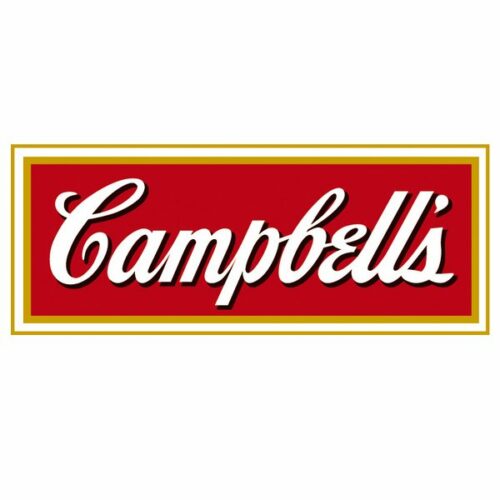Campbell’s Soup Font Revamp
After over 50 years, Campbell’s Soup’s label has undergone an overhaul. Gone are shadows and replaced with an updated font for an overall modern aesthetic. So, the latest version of Campbells Soup Font can be downloaded from below.
Soup labels now display “Soup” with an angled “O,” in tribute to founder Joseph Campbell’s original signature and to evoke feelings of comfort and goodness for consumers, according to the company.
Script
Campbell’s Soup Label Has Been the Subject of Many Pop Art Prints The Campbell’s Soup label has long been one of the best-known global brands, first introduced in 1869 by Joseph Campbell and designed to evoke “homemade” memories when making food purchases at that time. Joseph designed its logo based on his signature to resemble handwritten recipes often seen among housewives at that time as well as convey the “homey” experience it seeks to deliver through its products.
Recently, the company unveiled a revamped red-and-white label design while maintaining the familiar shape and size. This new version boasts more contemporary logo scripture; for example, now features brighter shades of red in its wordmark; lettering has also been simplified and made less blocky, while curves have been narrowed and lines extended further to give an elegant appearance.
Campbell’s new design is an appropriate reflection of their brand values, which emphasize quality ingredients wholesomeness, and transparency in operations. Campbell’s has recently rebranded itself as a consumer-centric organization; their new label also nods towards Andy Warhol whose iconic paintings of Campbell’s soup cans have become associated with them.
Sans Serif
Campbell Soup recently received a makeover, ditching its signature drop shadows and switching up its font with one that features simpler lines for a more modern aesthetic. While some critics claim this takes away from what makes Campbell’s Soup special, this change demonstrates how companies can evolve their branding through the ongoing evolution of branding efforts.
Though many studies suggest serifs are more readable than sans-serifs, most publications continue to utilize sans-serif fonts such as Helvetica, Futura, or Univers (adobe). These fonts offer more neutral yet industrial feels that work well across various publications as well as being great options when text needs to be expanded.
Sans serif fonts feature geometric bases with smooth, clean designs. Wider than their serif counterparts, sans serif fonts such as Roboto, Open Sans, Poppins Noto Sans, and Work Sans are often better suited for large texts than serif fonts and are versatile yet easy to read. Examples of sans serif fonts include Roboto Open Sans Poppins Noto Sans and Work Sans. They make for excellent reading material!
Campbell Soup Font is a timeless sans serif font with an elegant yet modern aesthetic, ideal for text and headlines in several weights. Available through Hipfonts for free download.
Italic
Campbell’s Soup label font is an example of an evolving font with time. Its elegant script combines trendiness and naturalism, making it suitable for multiple uses such as wedding invitations, gatherings, or birthday parties – or even for creating custom logos for businesses!
Campbell’s Soup labels were designed to stand out on grocery store shelves, creating feelings of warmth and home. Furthermore, their design conveys security – assuring shoppers they will always have quality food available – through features like Joseph Campbell’s signature as an additional guarantee to consumers.
Campbell’s Soup logo has long been recognized for its classic red and white colors as well as its distinctive font. Campbell’s recent refresh of its iconic logo aimed to modernize and refresh this font to make it more progressive and contemporary, creating something lighter yet more elegant that would stand out on retail shelves.
Andy Warhol cemented the Campbell’s Soup can as an icon of American pop culture after painting 32 cans in 1962 as part of his “Cans for Warhol” art installation. Although Warhol did not design the can, he used its iconic labels in his art to promote it – an early manifestation of Pop art that sought to incorporate everyday American subjects and issues into fine artworks.
Bold
The Campbell Soup logo features an elegant script font designed by Mans Greback that makes for an excellent choice when designing wedding invitations social gathering invitations, business cards, and any project that requires a script typeface. Use any color of this font to highlight your message!
Campbell Soup logo remains unknown, although its corporate archivist, Jonathan Thorn, speculates it likely evolved gradually through time as part of a “cooperative effort.” Sinnickson Chew & Sons Company printed its label and played an essential part in developing early brand concepts for Campbell Soup.
Although Campbell Soup labels may appear to be mass-produced, their subtle variations from canvas to canvas demonstrate they were painted by hand. Furthermore, these paintings include variations in opacity and hue as well as different placement of fleurs-de-lis from painting to painting – these irregularities testify to their careful craftsmanship as well as their brand’s commitment to quality.
Campbell Soup Company recently unveiled its first major redesign in 50 years: an updated label with classic red and white colors but no shadows and returning to an earlier font style used on original 1898 labels, which won a gold medal at the Paris Exposition 1900. “Soup” now also features a distinctive slanted letter O that recalls earlier designs that won praise at that event.







